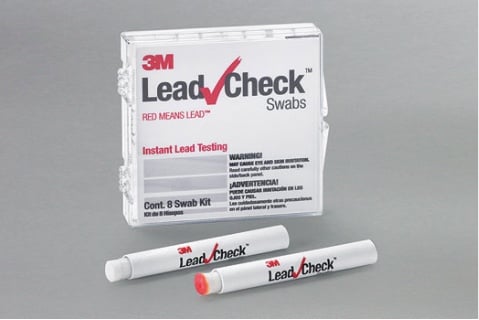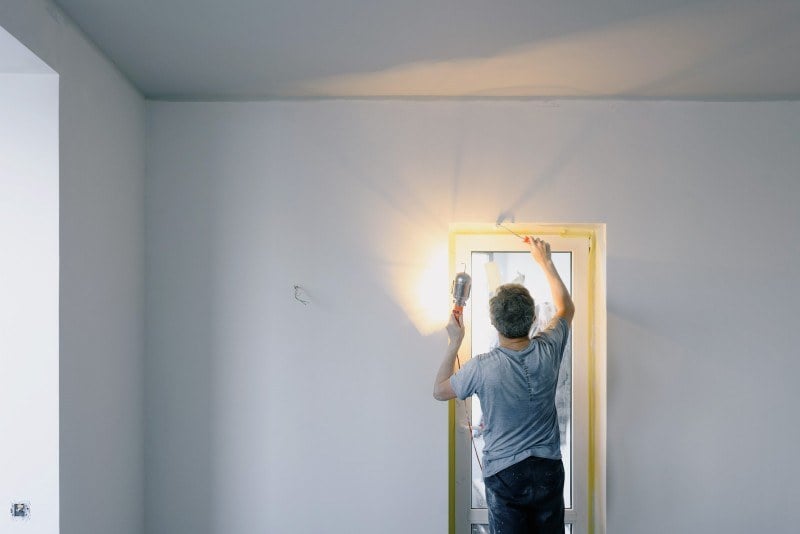When you’re buying or selling a home, it’s important to know whether or not the home has lead-based paint. Why? Lead helps keep paint fresh and moisture resistant, so lead-based paint was frequently used to cover home interiors in the first half of the 20th century. However, we now know that it is highly toxic and can cause developmental issues in children.
The U.S. banned the manufacture of lead-based house paint in 1978; for this reason, any home built prior to 1978 needs to be checked for lead (and homeowners will need to give buyers a lead based paint disclosure when it comes time to sell). The older your home is, the more likely it is to contain lead-based paint, as usage of lead-based paint was already dropping by the time the ban came into place.
Here’s what you need to know.
How Common is Lead Paint?
The number of homes that are likely to have lead paint may surprise you. According to the Department of Housing and Urban Development, around 35% of American homes contain some lead-based paint. This paint may be present on walls, but can also be found on old windows, door frames, and floor baseboards.
This number is concerning. If lead is ingested or absorbed, it can damage the vital organs and cause other health-related issues. What’s worse, children often display no symptoms of lead poisoning - but it can slow down and harm their development, potentially causing permanent damage.
Lead Based Paint Disclosure: Requirements
If you sell a home built prior to 1978, there are certain steps you need to take.
You’ll be required to:
- Provide the buyer with an EPA-approved pamphlet on identifying and managing lead paint hazards
- Disclose anything you know about lead-based paint in the building (here is an example of a lead based paint disclosure form)
- Obtain a lead-based paint inspection (though this can be waived by the buyer, if they agree to it)
In other words, a lead paint disclosure is required for older homes.
What happens if you don't disclose?
A failure to disclose the presence of lead paint opens the seller to liability. You could be sued for legal damages if a child gets sick from lead poisoning, or you may have to pay federal penalty fees of over $10,000, according to NOLA.
 Older homes may have lead paint.
Older homes may have lead paint.
What’s Required for Selling a Home with Lead Paint?
So you've filled out the lead paint disclosure correctly, but you're wondering what comes next. Any lead paint in your home will typically be dealt with the same way other issues that come up during an inspection are dealt with: the buyer will likely ask you to reduce the purchase price of the home, in order to cover the costs of remediation. Or, they may ask you to deal with it yourself, but you have the option of declining and finding another buyer.
What if I Buy a Home That Has Lead Paint?
If a lead-based paint disclosure reveals that your new home has lead, you won’t need to tear down the walls or pay for expensive remediation in most cases. According to the EPA, if the paint is in good condition it likely isn’t a problem.
The problem is when walls age and the paint is chipped, damaged, moistened, or cracking. When this happens, dangerous lead exposure is far more likely. The extent of the damage will determine what you need to do.
Lead is more concerning for children both because of how it can impact development, and because they often crawl, bite or touch areas that could be covered in lead paint or accumulated lead dust (like a floor).
There are several ways to reduce potential lead exposure:
- It’s important to dust frequently in a home with lead-based paint using a wet cloth or paper towel, since the paint can chip off and be inhaled - especially by children who may play or crawl on the ground more frequently.
- Have your air ducts cleaned regularly.
- Frequently clean your floors so that lead dust can’t collect there.
How Can I Get Rid of Lead Paint?
The Department of Housing and Urban Development (HUD) awards grants to low-income residents to help reduce the likelihood that young children are exposed to lead. Organizations can apply for various grants that cover lead paint remediation.
If your home has a significant lead issue, you may need to pay for lead paint removal. This can be an expensive process. According to Home Advisor, you can expect to pay between $8 and $15 per square foot. So for an average sized home - 1,310 square feet - you can expect to pay anywhere from $10,500 to $19,650 to have lead paint removed (though that’s assuming there’s lead paint on every single wall, which isn’t necessarily the case).
There’s a few different methodologies for lead paint removal, including:
- Wet sanding
- Wet scraping
- Wire brushing
Wet sanding and wet scraping prevent the lead from turning into dust, which can create risk even after the paint itself is removed from the wall.
Alternatively, a contractor can opt to completely cover the lead paint with new drywall, which will effectively mitigate the risk. It’s also possible to encapsulate lead paint - in this case, the specialist will roll a special, watertight paint onto the lead paint, which will seal it off. The trouble with this method is that it tends to wear off around doors and windows, eventually lead back to the original problem.
It's important to do your research and work with professionals when lead is involved; dealing with it incorrectly can result in lead poisoning. Here is a useful government-provided fact sheet about how to protect yourself from lead poisoning.
Can you paint over lead paint in order to eliminate the risk?
The answer is no - it’s not enough to simply paint over lead paint with lead-free paint, since lead can leech through the upper level of paint, and still present a hazard. This is why following proper remediation solutions is important.
Testing for Lead
As a seller, you are not required to test for lead. However, you need to give the buyer 10 days to do so if your home was built before 1978.
There are a few different ways you can test for lead, if you want to know.
Home Test Kits
The EPA currently recognizes three at-home test kits, and these kits can detect the presence of lead with a 95% degree of accuracy. At-home tests can’t tell you how much lead is present, just whether it is or not. EPA-approved kits for cost about $25 for eight swabs (and you need more swaps than this to test your entire home).
- Keep in mind: there are two types of at-home tests, rhodizonate and sulfide. Rhodizonate-based kits turn pink in the presence of lead, which means it can’t be used to test pink or red walls, and sulfide-based kits are good for lighter paint colors.
Professional Testing
According to HomeAdvisor, the average cost for a home lead inspection is $316 (and it will cover the interior and exterior of the home). Unlike a home test kit, the professionals will use a fluorescent X-ray analyzer to determine the specific levels of lead in your home. They will also test multiple surfaces, not just one, and be able to inspect for lead as well (a professional inspection may be able to determine that lead paint has been buried beneath existing paint layers, for example).

Lead Paint: Should I be Worried?
Lead paint is not uncommon in older homes, and if it's been properly dealt with/remediated, there may not be much to worry about. For more information on lead paint, its risks, and what you can do, check out the Environmental Protection Agency's list of resources.
For Further Reading



